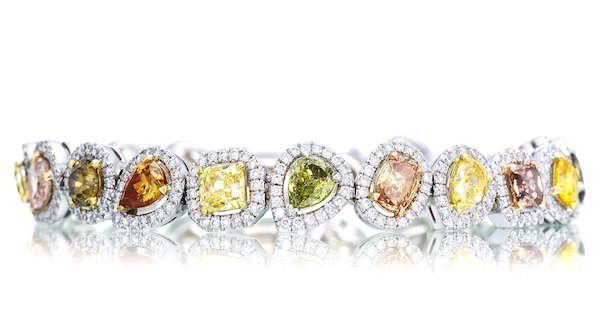
Only a small portion of diamond lovers are familiar with the rest of the diamond color palette, and natural yellow diamonds are one of the most sought-after rocks. The most substantial majority of those who love, own, or plan on purchasing a diamond, only have white diamonds in mind. Since the leading reason for cherishing diamonds is their uniqueness and rarity, colored diamonds deserve even more attention than their conventional counterparts.
For connoisseurs and non-professional enthusiasts alike, the white diamond has always been and will remain the absolute authority among precious rocks. However, the genuine diamond aficionado should know just how much harder it is to find naturally colored diamonds. If we take into account the fact that the main reason for diamonds’ price and value, is that they are rare, colored diamonds are significantly more scarce, and therefore even more valuable.
What Is So Special About Yellow Diamonds
If we were to start a list and count all the different facets that make diamonds exceptional, that list would be an endless scroll. However, it might do some justice to start with the fact that diamonds predate all human life and even the plant life on the Earth. Diamonds form three layers underneath our planet’s surface, beginning to take their shape in the Earth’s mantle, below the crust and core layers.
Since it’s not yet possible to drill so deep into the Earth, hot magma with kimberlite is what helps diamonds reach surface levels. Kimberlite, an ingenious rock, is often subjected to volcanic activity. Volcanic activity creates kimberlite pipes that rise hot magma containing diamond-infused kimberlite. Before and during this process, diamonds gain their color by alterations in the molecular structure.
Different factors are responsible for different colors the diamond may acquire. Since only strong covalent bonds make up the crystal lattice of the diamond, only a few elements can interfere with the creation process. The chemical element accountable for producing the yellow color in diamonds is nitrogen. The hue and intensity of the yellow color depends on the amount and placement of nitrogen atoms in the diamond’s allotrope.
When it comes to colored diamonds, including yellow diamonds, the color also depends on the rock’s cut and finish. The reflection, refraction, and dispersion of light depend on the polish, symmetry, and the diamond’s facets. For example, a yellow colored diamond will appear brighter with a round or a princess cut, while an emerald cut doesn’t reflect as much and will preserve the depth of the color.
The Best Yellow Diamonds on the Market
Most people would opt for typical gems when looking for the perfect gift for a loved one. Whatever the occasion, if it demands a precious rock, it must be a unique event. And what better way to mark a unique event than by accompanying it with a remarkable gemstone? White diamonds will always keep the traditional impact among precious crystals, but colored diamonds are the best method to mark any occasion in the most exclusive way.
To a well trained, professional eye, the tone of the yellow diamond’s color is what sets the tone for the rest of its qualities, and most importantly, the diamond’s price. Since most of the mined diamonds have a light yellow hue in their natural, unpolished state, diamonds of intense yellow color are those deemed most valuable. However, in addition to the color, the diamond’s carat, clarity, and cut are the denominating factors in determining its price.
People across the world are penetrating the diamond market. Some of them are on the quest for the perfect gift for a beloved one, and some want the ideal complement to their long-term investment portfolios. Whatever your reason for eying a yellow diamond, you won’t make a mistake to get a certified diamond from Astteria.
